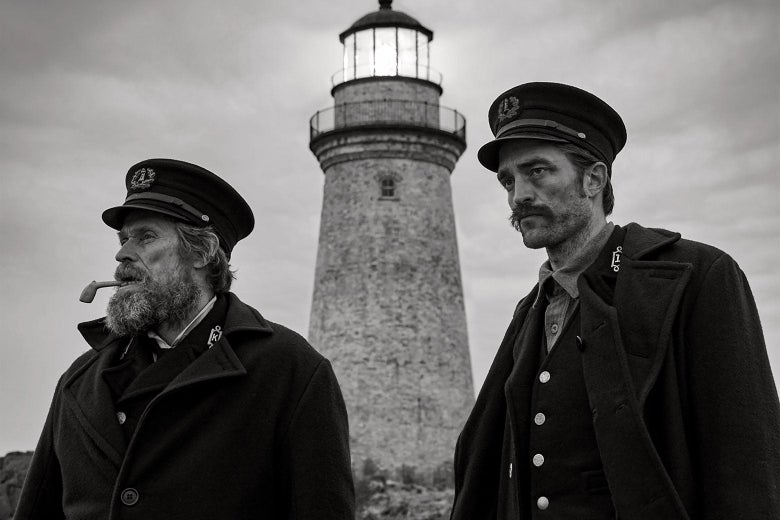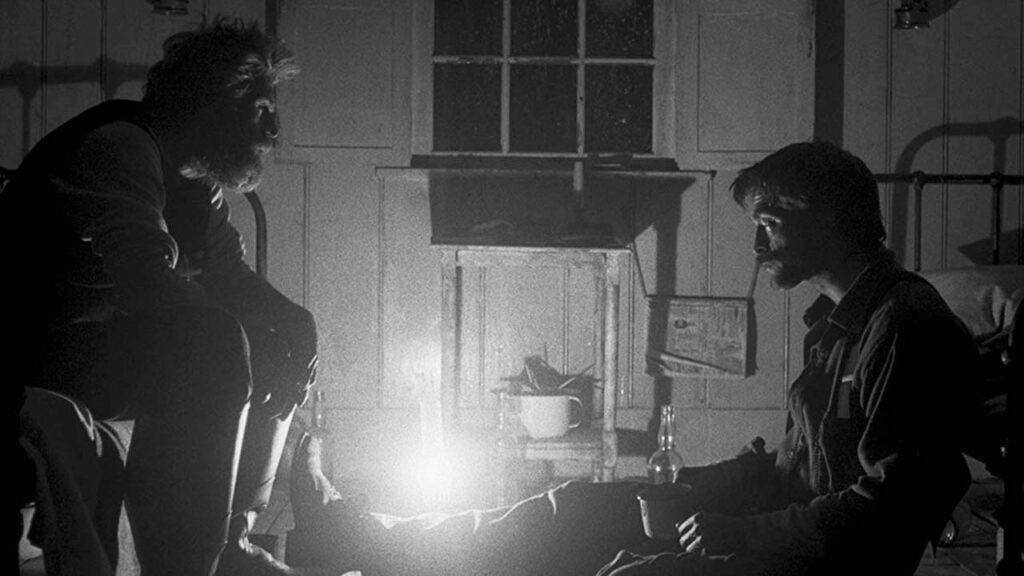The Lighthouse Cranks up the Tension With Ticking Clocks

Ahoy there mateys! It’s quite a film what’s been released this spooktacular season—and it’s not fer the faint of heart! *Clears throat* Welcoming land-lubbers to view in its spectacle, Robert Eggers’s The Lighthouse is a throwback to classic cinema and myths surrounding the ancient sea. It’s a psychological movie that has its audience members questioning reality throughout—and it masterfully incorporates themes of time to build tension in its scenes. Keeping in accordance with the times, we’ll do our best to avoid spoilers when talking about time-centric themes in The Lighthouse (but no promises). As it goes, time’s not as linear as many would like it to be. Sanity is not as simple either. So thusly, we be setting sail into strange waters.
A Simple Start
It seems like a straightforward job: Watch and tend to a lighthouse for four weeks. Count the minutes, count the hours, count the days and eventually you’ll be making off with a decent wage. Well, that’s what Ephraim Winslow (Robert Pattinson) and his supervisor Thomas Wake (Willem Dafoe) set themselves to do. Figuratively punching in for a job and watching the prior residents set sail, they begin settling in—preparing for long nights and hard manual labor. It’s New England, late 19th century. Thomas is old and there to direct the young Ephraim on a job he’s never pursued before. Audience members will see the tension between young and old build—clocks swinging and ticking each night as Thomas breaks Ephraim out of his shell with maritime toasts. Everything seems at least manageable, until nature begins to rumble.
Punch the Clock

Supposedly bringing about a curse with actions you must see to believe, Ephraim’s nightmarish dreams and psychological threads begin coming apart. A storm maroons the men on their island. Lines between friend and foe (Willem Dafoe?) become blurred. Nightmarish visions of tentacles and an obsession with the lighthouse light—which only Thomas is allowed to view (under lock and key)—send Ephraim further into madness. Thomas begins going mad in his own right but who’s to say where one begins and the other ends? This is where The Lighthouse truly shines. It literally has brass clocks chiming and ringing against the howling of storms, there are conversations about the days and nights blurring together, just like the chiming and blurring of the character’s minds. When the tenure of the lighthouse’s residents is up, and they’re left to their own devices, Ephraim literally punches a clock—signifying his break from linear time. “No relief” rings across the minds of Ephraim and Thomas as they battle one another across their senses of self and reality.
Period Appropriate
The brass work clocks and maritime barometers are indicative of the time period that The Lighthouse is set in. As well, the cinematography harkens back to a time in filmmaking where everything was shot in black and white—but its thrillers were anything but. Roger Eggers masterfully blends the illusions of time and sanity into a psychological opus that isn’t for those wary of the searing depravity insanity can bring. Its Lovecraftian horror and ticking clocks will maybe bring those who view it to question their own minds. So be warned all ye horological film-goers: Ye who enter its waters are in for askin’ more questions than “what time is it?” May ye weather the storm, should ye set sails to cinemas this Fall. Keep an eye out fer those nor’easters—hold fast and have yerself a grand ol’ time.
Times Ticking has been in operation for more than 30 years, since 1982. We have performed watch repair for customers both locally and internationally. If it Ticks! We KNOW it! Our team of watch repair technicians have a combined experience in watchmaking of over 120 years.

